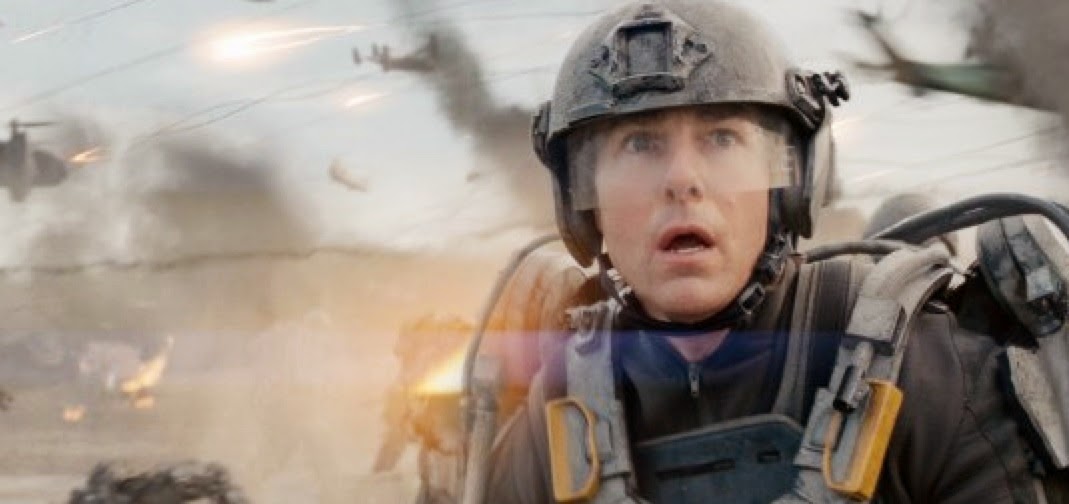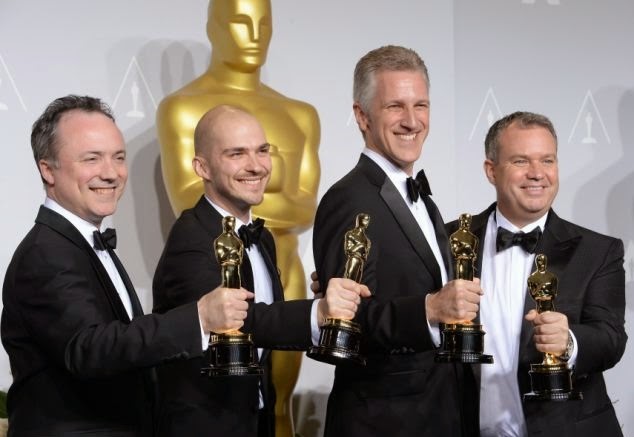
Background:
It could be argued that the first
X-Men (2000) film began the modern-day phenomena of blockbuster superhero franchises. 4 films and 2 spin-offs later into this series,
X-Men: Days of Future Past arrives in 3D, directed again by the series' original helmer,
Bryan Singer. This is not the first time we've seen Wolverine and his pals in 3D, so we've a lot of precedent to judge this effort against. How's the 3D in
X-Men: Days Of Future Past? Read on to find out!
Native and Post-converted 3D
X-Men: Days Of Future Past is a hybrid stereo film. Interior and dialogue scenes were largely shot
in native 3D. Several key sequences were post-converted sequences from a mono source. Other shots are largely CGI in nature, and the responsible effects houses were able to natively render their footage to stereo. It's therefore quite a confusing film to critique. To do the job properly, one would need a shot list or production schedule. We'll do our best though.
As a rule of thumb,
most "first unit" sequences (character beats that would typically be directed by the director himself, and featuring the A-list stars) set indoors are clearly shot in native 3D. An observant audience member will be able to tell the difference. The trick is to look for subtle details; strands of hair, the length of an actor's nose, or even just compositional details like the layers of props on a table. In these scenes, it's interesting how at ease your eyes become. The camera is often locked down, actors are interacting in multiple panes of depth, and the stereo feels completely natural. You're there, say in Professor Xavier's mansion, with the other X-Men. These sequences were
shot on ALEXA Ms.
"Second unit" sequences (eg: the type of moment that doesn't usually require an expensive star, such as a shot where a hand picks up an object) are often show in 2D, and later post-converted to 3D. The same is true of large sequences that are shot on older film stock, using cameras from the 1970s, where the footage was later converted to a subtle form of stereo too. The conversion is handled well, and there are no glaring errors in the added depth. Aside from having marginally more eye strain, most audience members won't be able to tell the difference. What's interesting though, is the 'feeling' one gets from this rapid-fire transition.
According to editor John Ottman, he edited the film in 2D, while the mono footage was being converted to stereo, because the cuts between the two formats were so regular and jarring that he couldn't process the visuals consistently. While audiences are thankfully spared from experiencing this, we at 3Defence definitely came away with a feeling that the film lacked a stereoscopic 'continuity'. Post-conversions are great, until they're compared to native 3D in the same sequence. These sequences were
shot on ALEXA XT's.
Of course, as usual with most Hollywood blockbusters, there are also shots in the film that are 'rendered 3D'. In shots where the majority of the action is a composite of shots with digital characters (for example, a few shots of Sentinels in the beginning sequence), it's more than likely that the effects studios in charge of the shots provided the stereo rendered 'natively'. So,
X-Men: Days Of Future Past is a hybrid of techniques.
How's the depth?
As mentioned above, the visual continuity is inconsistent throughout
X-Men: Days Of Future Past. That is due to a number of reasons, in addition to the differing methods of filming. For one thing, large sections of the film's schedule were aggressively organised around the ensemble cast's availability. For another, the film went through several rewrites (even during production),
major edits, and even
rearranged which actors were part of key scenes.
So, ignoring the inconsistency of depth used in the film, we can look at a few shining moments where depth is used really creatively. The stand-out sequence, both from an entertainment perspective and a technical perspective, is a prolonged slow-motion one where Quicksilver single-handedly disarms and defeats several foes. The character's power is to be able to "
move and think at superhuman speeds." Consequently,
like The Amazing Spider-Man 2 before it, we're offered another version of a bullet-time like sequence, where a character is able to interact with a chaotic environment where objects are suspended in mid-air. Aside from being hilarious, the sequence allows the character dozens of objects to interact with and run around, on various panes of depth. It's an engaging sequence visually, and single-handedly worth the price of admission.
Another fantastic sequence is provided in the way Blink's powers are used in the film's first big action set-piece. She can project an entry and exit portal, that allows characters to jump through a kind of wormhole. In 3D, we get to see characters leap from one side of the room to the other, to startling effect. Just as your eye learns where a character is in the scene, the character is transported to a different spacial plane, forcing your eye to try and catch up. It's a power visual, that is used well in the beginning and end sequences of the film.
Does the 3D 'pop'?
There are a few instances where
debris, water, dust and other particle-based elements come very close to the edge of the screen. Generally the film treats the screen's boundary as a safe barrier between the audience and the action. If you're after yo-yo styled pop-out effects,
X-Men: Days Of Future Past is not the 3D film for you.
Did it make sense to add 3D to X-Men: Days Of Future Past?
In theory, it makes sense to add 3D to any X-Men movie. Their characters are colourful, with a variety of interesting powers, and in
Days Of Future Past they interact across time and space. In practice though, this film spends a lot of time in a murky and dark post-apocalyptic future, and in 3D these scenes are distractingly gloomy. 3D projection's light-loss was evident in many sequences throughout
Days Of Future Past, and we didn't feel the film-makers did enough to counteract this. Films like
Prometheus and
Tron: Legacy have worked around this issue with bright neon-flavoured yellows and blues.
Days Of Future Past's 'fire-light' orange didn't have the same effect, and made the image softer than we'd like.
The film itself
X-Men: Days Of Future Past is a great film... provided you have watched at least four key films from the series beforehand. It's assumed at this point you know the key characters' powers, without any real introduction or back-story. Most characters get an arc of some description, though the impact of that arc is more meaningful if you've seen the other films the arc relates to. In that sense, this is a perfect comic book movie. We wouldn't advise casual viewers check this out, unless they're prepared to do their homework ahead of time! If you have done your homework, you'll be rewarded for as much as effort as you were prepared to put in. The complexity of the lore on offer here is getting seriously dense, and it's a treat to see your favourite characters navigate unfamiliar terrain in the way we see here. At least as of our first viewing, this film vies with
X-Men 2 for the title of 'best in the series'.
Should we archive the 2D or the 3D version?
Archive the 3D version, if only for the beauty and hilarity of the Quicksilver heist sequence. Seeing that in 3D is worth it, if you were umming and ahhing about paying the extra dollar for premium 3D ticket prices. There are parts of
X-Men: Days of Future Past we weren't fans of, from a stereo perspective, but that one sequence is going to go down as one of the 'all time great' 3D moments.
























































